Abstract
The aim of this study was to evaluate the change of supraspinatus muscle and tendon as well as biceps tendon after pitching in Korean professional baseball league pitchers by the application of sonoelastography. A total of 10 pitchers from Korean professional league were evaluated their supraspinatus muscle and tendon and long head of biceps tendon of dominant arm by sonoelastography at all-star break period. After one month later, re-evaluations were performed after pitching in the game. The strain ratio of supraspinatus muscle and tendon (red portion, soft; blue portion, hard), thickness of supraspinatus and long head of biceps tendons were evaluated. For the correlation analysis with pitching, numbers of pitches, maximal velocity, maximal difference of velocity and ratio of breaking balls among pitches were investigated. The strain ratios of supraspinatus muscle, thickness of supraspinatus and long head of biceps tendon were decreased but not statistically significant. However, the strain ratio of red portion in supraspinatus tendon was significantly increased. There were no correlations between sonoelastograpic findings and pitches.
Go to : 
REFERENCES
1.Klauser AS., Miyamoto H., Bellmann-Weiler R., Feuchtner GM., Wick MC., Jaschke WR. Sonoelastography: musculoskeletal applications. Radiology. 2014. 272:622–33.

2.Varghese T., Ophir J., Konofagou E., Kallel F., Righetti R. Tradeoffs in elastographic imaging. Ultrason Imaging. 2001. 23:216–48.

3.Itoh A., Ueno E., Tohno E, et al. Breast disease: clinical application of US elastography for diagnosis. Radiology. 2006. 239:341–50.

4.Lalitha P., Reddy MCB., Reddy KJ. Musculoskeletal applications of elastography: a pictorial essay of our initial experience. Korean J Radiol. 2011. 12:365–75.

5.De Zordo T., Chhem R., Smekal V, et al. Real-time sonoe-lastography: findings in patients with symptomatic achilles tendons and comparison to healthy volunteers. Ultraschall Med. 2010. 31:394–400.

6.Brandenburg JE., Eby SF., Song P, et al. Ultrasound elastography: the new frontier in direct measurement of muscle stiffness. Arch Phys Med Rehabil. 2014. 95:2207–19.

7.Yanagisawa O., Sakuma J., Kawakami Y., Suzuki K., Fukubayashi T. Effect of exercise-induced muscle damage on muscle hardness evaluated by ultrasound real-time tissue elastography. Springerplus. 2015. 4:308.

8.Moon WK., Chang SC., Huang CS., Chang RF. Breast tumor classification using fuzzy clustering for breast elastography. Ultrasound Med Biol. 2011. 37:700–8.

9.Park SH., Kim SJ., Kim EK., Kim MJ., Son EJ., Kwak JY. Interobserver agreement in assessing the sonographic and elastographic features of malignant thyroid nodules. AJR Am J Roentgenol. 2009. 193:W416–23.

10.Yoon JH., Kim MH., Kim EK., Moon HJ., Kwak JY., Kim MJ. Interobserver variability of ultrasound elastography: how it affects the diagnosis of breast lesions. AJR Am J Roentgenol. 2011. 196:730–6.

11.Muraki T., Ishikawa H., Morise S, et al. Ultrasound elastography-based assessment of the elasticity of the supraspinatus muscle and tendon during muscle contraction. J Shoulder Elbow Surg. 2015. 24:120–6.

12.Seo JB., Yoo JS., Ryu JW. Sonoelastography findings of supraspinatus tendon in rotator cuff tendinopathy without tear: comparison with magnetic resonance images and conventional ultrasonography. J Ultrasound. 2015. 18:143–9.

13.Kanematsu Y., Matsuura T., Kashiwaguchi S, et al. Epidemiology of shoulder injuries in young baseball players and grading of radiologic findings of Little Leaguer's shoulder. J Med Invest. 2015. 62:123–5.

14.Kinsella SD., Thomas SJ., Huffman GR., Kelly JD 4th. The thrower's shoulder. Orthop Clin North Am. 2014. 45:387–401.

15.Yang J., Mann BJ., Guettler JH, et al. Risk-prone pitching activities and injuries in youth baseball: findings from a national sample. Am J Sports Med. 2014. 42:1456–63.
16.Yanagisawa O., Niitsu M., Takahashi H., Itai Y. Magnetic resonance imaging of the rotator cuff muscles after baseball pitching. J Sports Med Phys Fitness. 2003. 43:493–9.
17.Polster JM., Lynch TS., Bullen JA, et al. Throwing-related injuries of the subscapularis in professional baseball players. Skeletal Radiol. 2016. 45:41–7.

18.Yeh ML., Lintner D., Luo ZP. Stress distribution in the superior labrum during throwing motion. Am J Sports Med. 2005. 33:395–401.

19.Keeley DW., McClary MA., Oliver GD., Dougherty CP. A pre-post performance comparison of the long head of the biceps brachii muscle oxygenation in young baseball pitchers. J Sports Med Phys Fitness. 2014. 54:118–23.
20.Miniaci A., Mascia AT., Salonen DC., Becker EJ. Magnetic resonance imaging of the shoulder in asymptomatic professional baseball pitchers. Am J Sports Med. 2002. 30:66–73.

21.Seo JB., Yoo JS., Ryu JW. The accuracy of sonoelastography in a fatty degeneration of supraspinatus: a comparison with magnetic resonance images through quantitative assessment. J Korean Orthop Assoc. 2014. 49:223–30.

22.Zanetti M., Hodler J. Imaging of degenerative and posttraumatic disease in the shoulder joint with ultrasound. Eur J Radiol. 2000. 35:119–25.

23.Tudisco C., Bisicchia S., Stefanini M., Antonicoli M., Masala S., Simonetti G. Tendon quality in small unilateral supraspinatus tendon tears: real-time sonoelastography correlates with clinical findings. Knee Surg Sports Traumatol Arthrosc. 2015. 23:393–8.

Go to : 
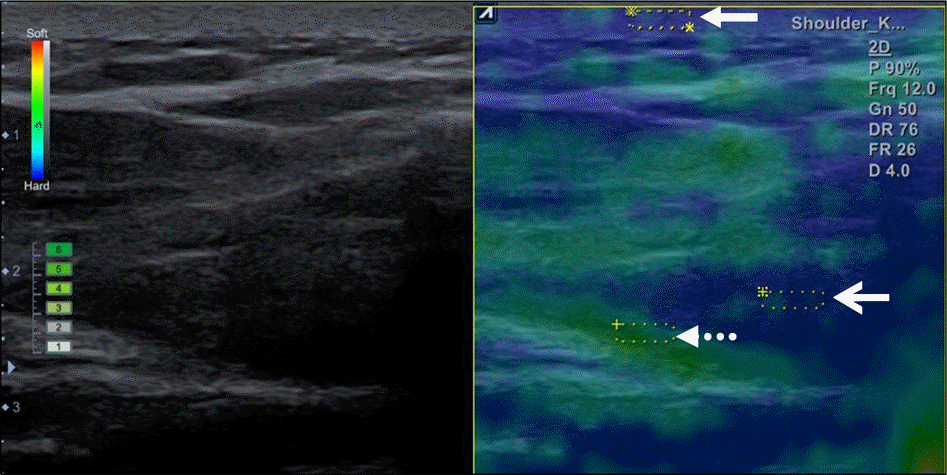 | Fig. 2.Measurement of strain ratio of supraspinatus muscle. Reference box (rectangle box) was located at the subcutaneous fat layer (closed arrow) and the same size of target boxes were located at red portion of supraspinatus muscle (closed arrow with dashed line) and blue portion of supraspinatus muscle (open arrow). |
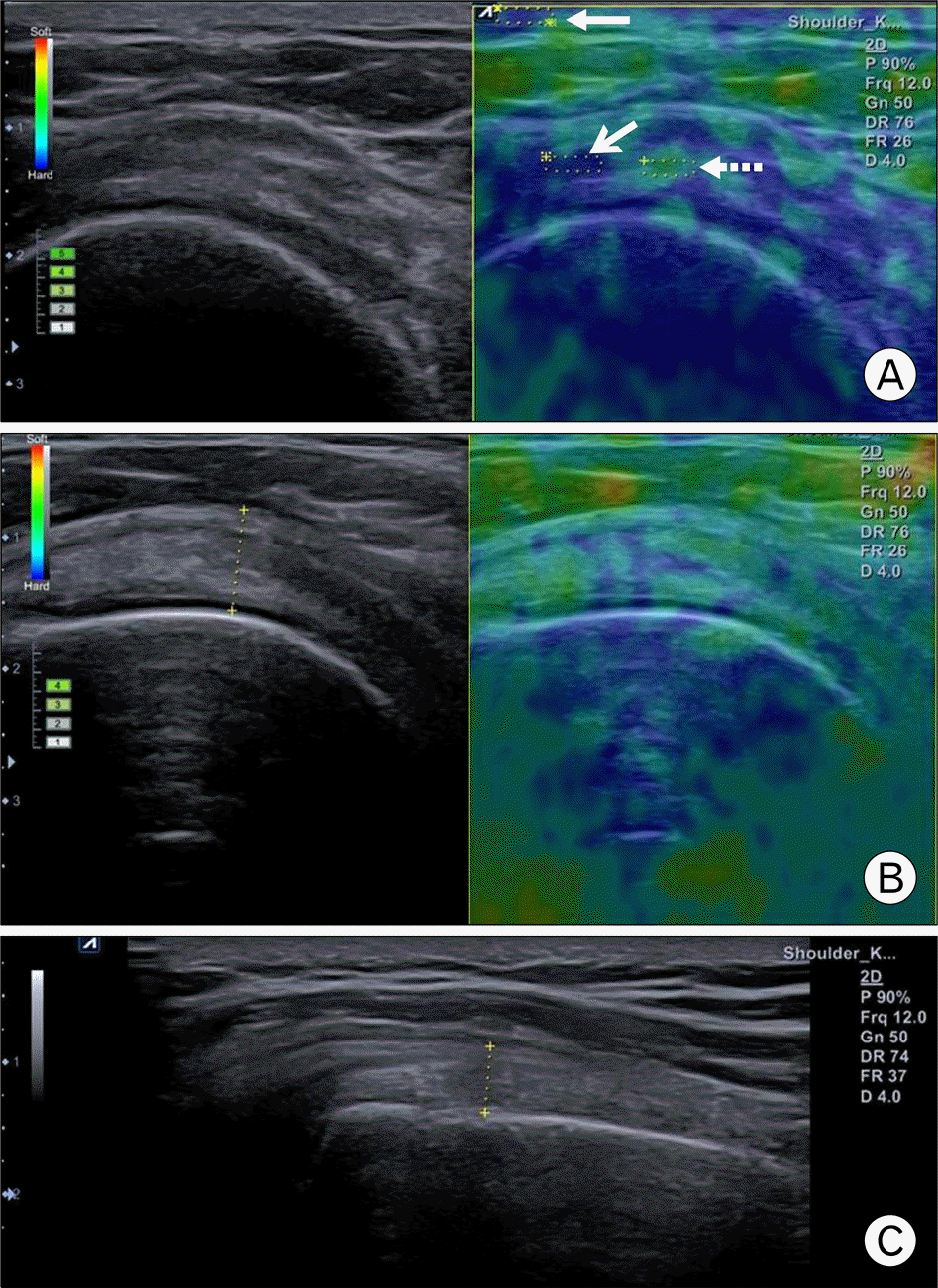 | Fig. 3.Measurement of strain ratio of supraspinatus tendon (A), thickness of suprasinatus tendon (B) and biceps long head tendon (C). As in the manners with the measurement of strain ratio in supraspinatus muscle, reference box was located at subcutaneous fat layer (closed arrow), and target boxes were located at red (closed arrow with dashed line) and blue portion of supraspinatus tendon (open arrow) (A). The thickness of supraspinatus tendon (yellow dashed line) was measured with highest thickness at superior facet of greater tuberosity (B) and thickness of biceps long head tendon (yellow dashed line) was measured in the long axis view (C). |
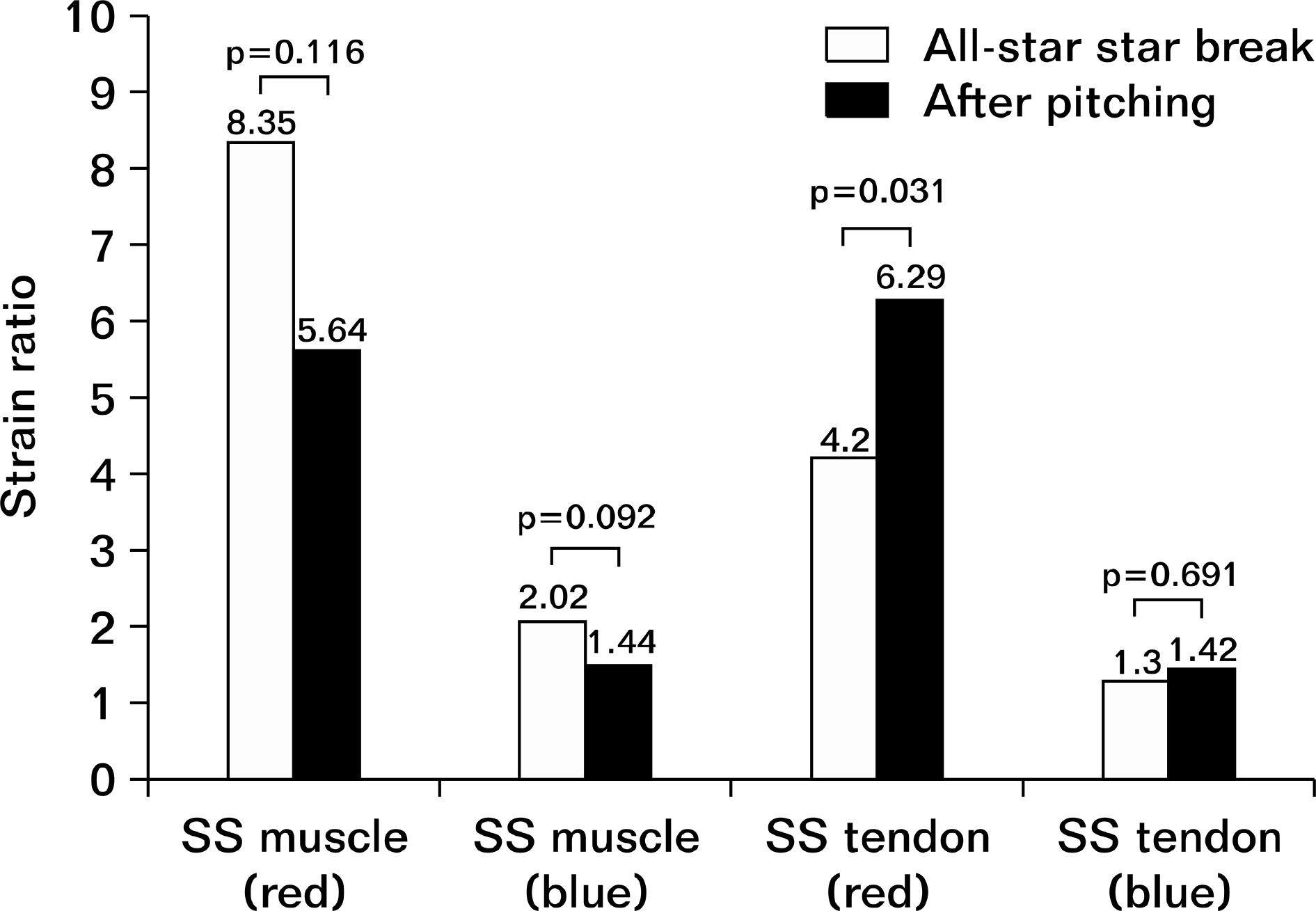 | Fig. 4.The change of strain ratio after pitching compared to all-star break period at red and blue portion of supraspinatus muscle and tendon. SS: supraspinatus. |
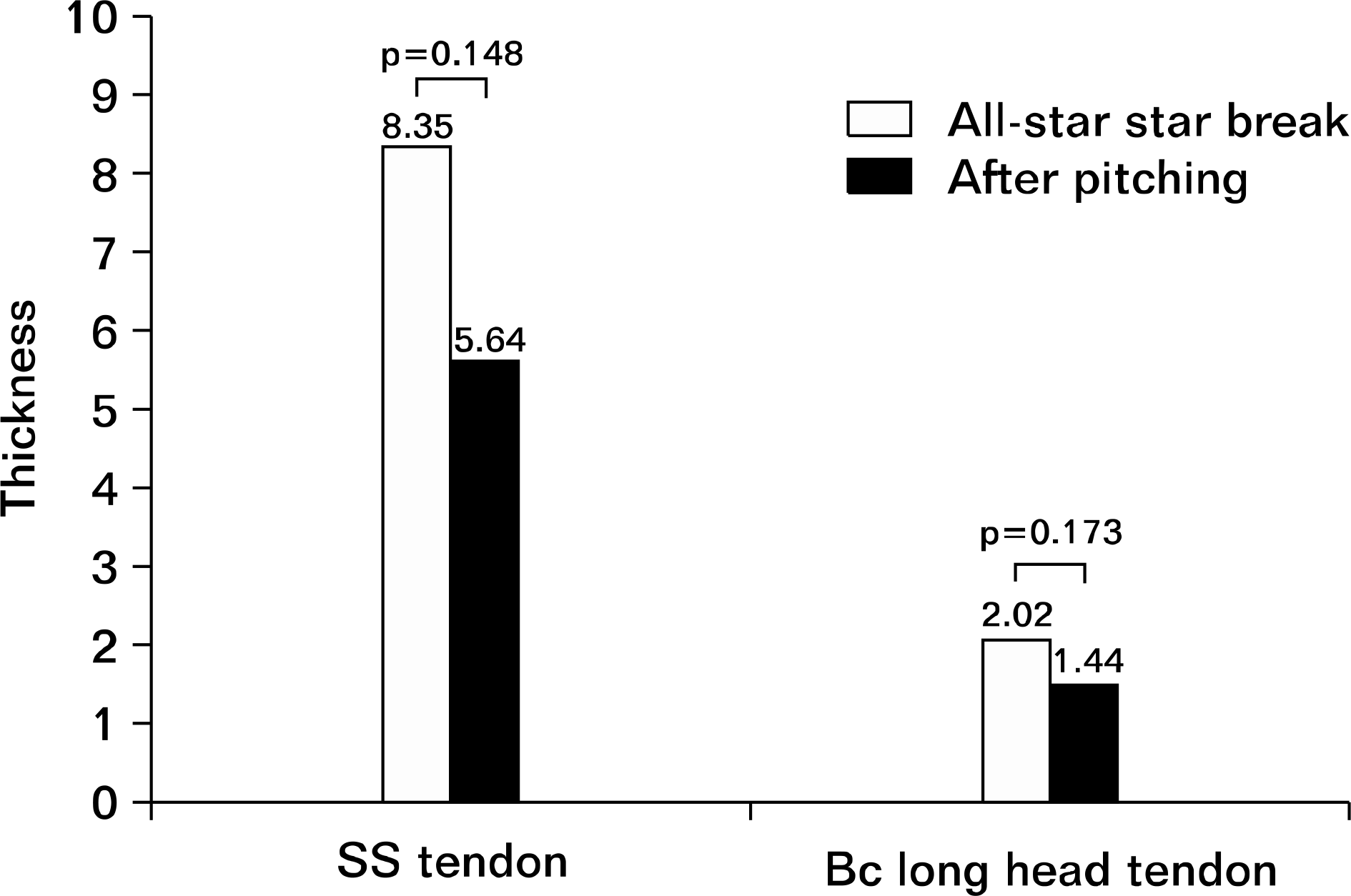 | Fig. 5.The change of thickness of supraspinatus tendon and biceps long head tendon after pitching compared to all-star break period. SS: supraspinatus, Bc: biceps brachii. |
Table 1.
Demographic characteristics of pitchers and basic data of the study
Table 2.
Comparisons between strain ratios of supraspinatus muscle and tendon at red and blue portion at all-star break and after pitching




 PDF
PDF ePub
ePub Citation
Citation Print
Print


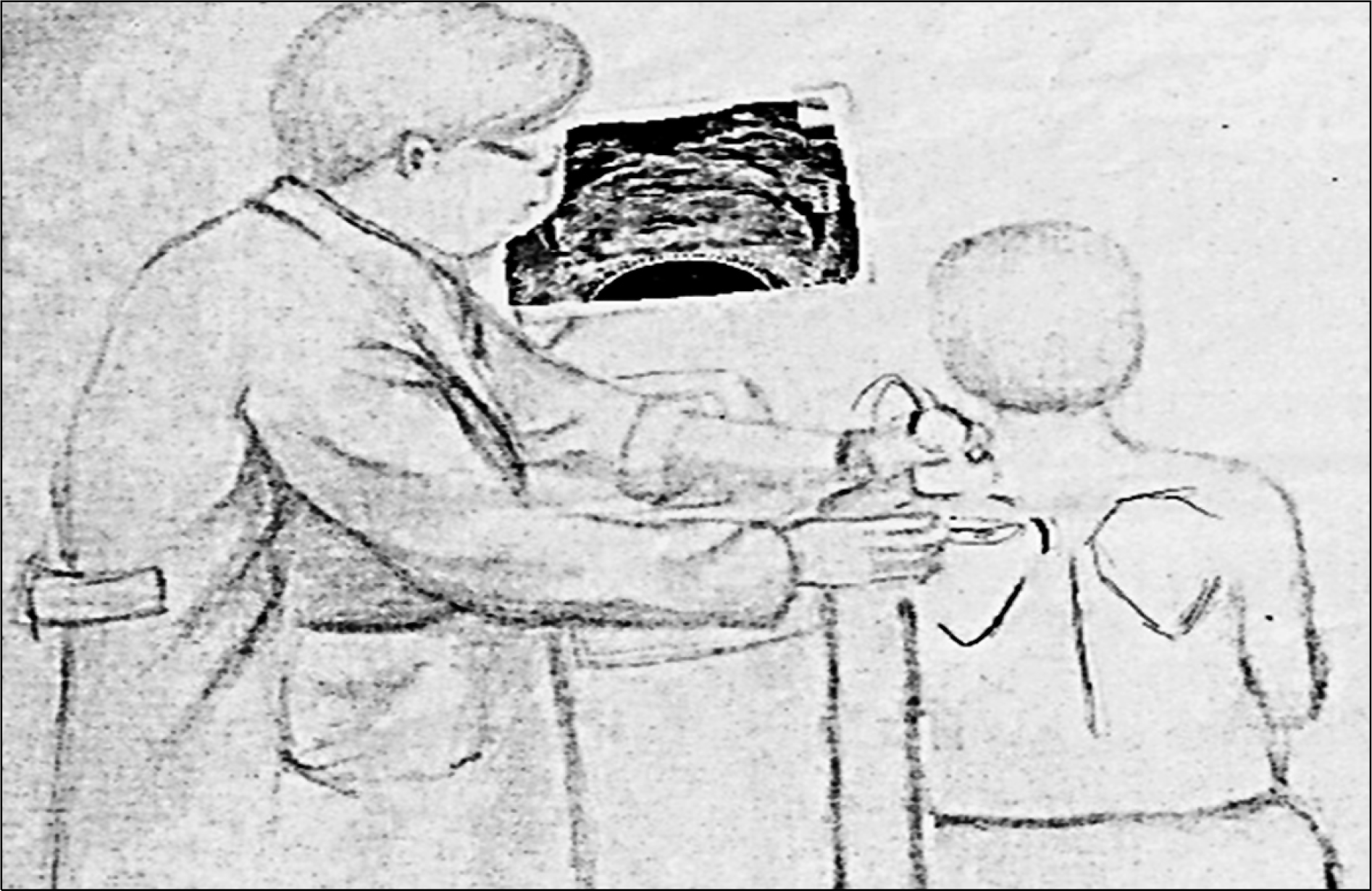
 XML Download
XML Download